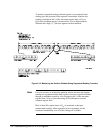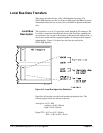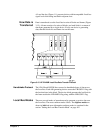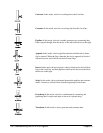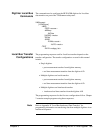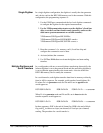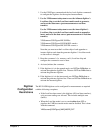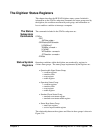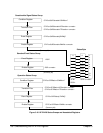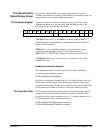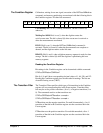
Setting the Local
Bus Transfer Mode
The Local bus transfer mode is set with the command:
VINStrument[:CONFigure]:LBUS[:MODE] <
mode
>
The <mode > parameters are:
APPend: Local Bus data is received from the left, and passed on to the right
until an end of frame is detected. When end of frame is received from the
left side, all data from this module is appended, followed by an end of block
marker and a new end of frame. After sending the end of frame marker, the
module enters the paused state. This mode requires a module to the left that
is in GENerate mode. The mode is not active until either an INITiate
command or a VINStrument:LBUS:MEMory:INITiate command is sent.
GENerate: Local bus data originates in this module and is passed to the
right, followed by an end of frame marker. The mode is not active until
either an INITiate command or a VINStrument:LBUS:MEMory:INITiate
command is sent.
INSert: Local bus data is inserted onto the bus from this module. The
module will place its data out onto the Local bus with an end-of-block flag
at the end. The module will then pass through (pipeline) any data it receives
from the left, and will enter the paused state when an end-of-frame flag is
received from the left. This mode requires at least one module to the left
which is in GENerate mode. The mode is not active until either an INITiate
command or a VINStrument:CONFigure:LBUS:MEMory:INITiate
command is sent.
OFF: The Local bus interface is disabled immediately upon receipt of this
command. Local bus data is neither used nor passed through.
PIPeline: Local bus data is passed through and not altered. This mode
becomes effective immediately upon receipt of this command. Select this
mode when data should be transparently passed through the
HP E1429B. The module will remain in the PIPeline mode even after an
end-of-frame flag is received; therefore, it is necessary to change modes to
take the module out of PIPeline mode.
162 Understanding the HP E1429 Digitizer Chapter 3



